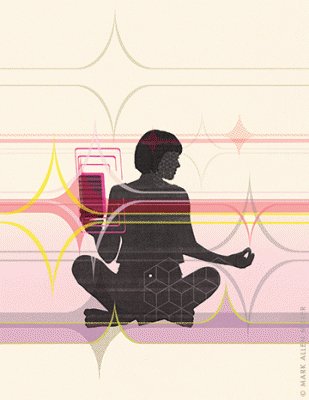Another new article of mine, this time in the Penn Gazette, which happens to be my alumni magazine. I really like the 1970s cybernetic thing going on in the accompanying illustration:

The piece is essentially about smartphones, and how the ideas in The Distraction Addiction () can be used to bring them back under our control.
We know how to use tools; the problem is that our smartphones don’t know how to be good ones. Our natural inclination is to treat them as extensions of our selves—and sometimes that works just fine. For example, aside from those of my wife and children, I haven’t memorized a phone number in years, because I can trust my smartphone’s flawless recall. But other apps are designed to capture and resell my attention; and the more I interact with them, the better they get at distracting me. (I’m looking at you, Facebook.) Our phones are clever enough to grab our attention, but not smart enough to guard it, or know when we should be left alone.
The good news is, you can turn these weapons of mass distraction, these interruption amplifiers, into filters that protect your attention rather than compete for it.





